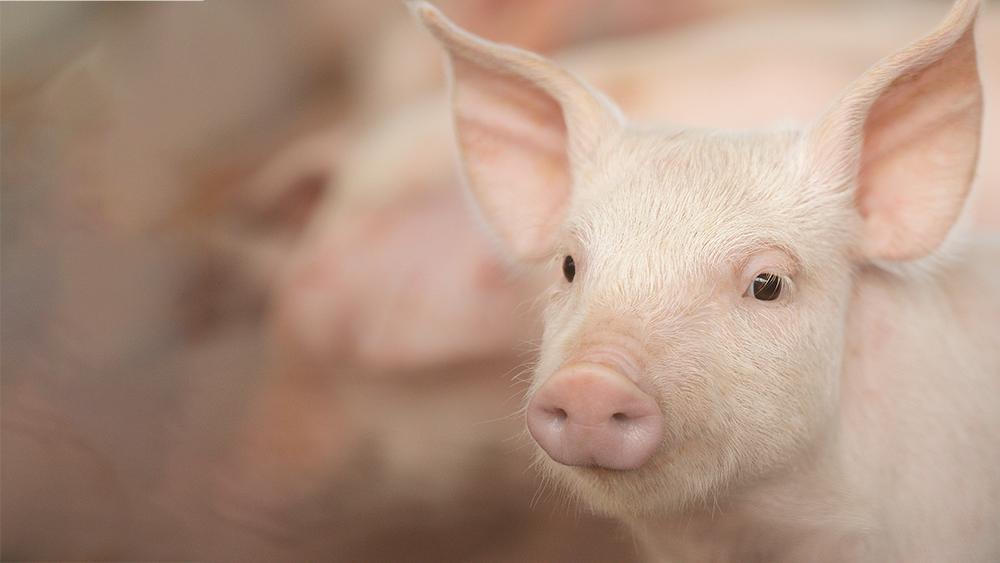Featured in Farm Journal’s PORK
Disease status and stability of the sow herd can have a significant impact on thriftiness in terms of producing a quality weaned pig.
“I focus on how we can improve pig quality with the sow,” says Mariana Boscato Menegat, PhD, swine nutritionist for Holden Farms in Northfield, Minn. “If the sow thrives the piglets are more likely to thrive. I focus on how sows are doing when they come into the farrowing room in terms of nutritional and health status, as that can determine how she does in lactation. In the nursing state, the piglets’ health is closely related to the sow’s health. Remember, the pig’s microbiome is the same as the sow’s microbiome.”
“You can have the perfect people working with the perfect genetics but health and biosecurity can impact all of that,” says Uislei Orlando, Ph.D., global director of nutrition for PIC. “Health is one of the most important factors to achieving success.”
Orlando led nutrition decisions for 12 years in a large integrated company in Brazil. He knows that herds that mix different sources of piglets are opening up their operation to a potential outbreak, which of course impacts overall herd health.
“Proper vaccination and biosecurity protocols will help you get the right piglet at weaning,” Orlando says.
Health is key to producing a quality weaned pig, agrees Sergio Canavate, PIC technical services director for applied female reproduction. To this point, gilt acclimation is critical, he says.
“Gilts are a naïve population – they’re going to a sow farm that has its own environment. We want gilts to be acclimated before they’re bred,” Canavate says.
“The offspring from gilts are more susceptible to disease,” he continues. “Good biosecurity practices will help protect the farm against any threat that can impact production and health status. Also, we cannot forget to implement proper cleaning and disinfecting practices and ensure optimum environmental conditions in farrowing rooms.”
Producing More Quality Pigs
Piglet birth weight is a major component of piglet quality at weaning, says Mark Knauer, associate professor and Extension swine specialist at North Carolina State University. He believes strategies should be implemented to reduce the percentage of low birth-weight piglets. Genetic companies like PIC strongly emphasize selection to improve birthweight and survivability.
“Our genetics focus on producing more piglets, but’s not just about more piglets,” Orlando explains. “We want more piglets at market so we’re selecting for more robustness, greater birthweight, higher pre-weaning weights and survivability.”
Attention to Detail
Good management is critical in producing a thrifty quality weaned pig, and that means attention to detail.
“With automated systems, we often assume sows have free access to feed and water in the farrowing room, but we want to make sure the sows have fresh feed and water at all times,” Menegat says.
She recommends producers ensure: Lactation feed is always fresh and feeders are unplugged; water pressure and water flow are adequate; and gilts know how to use the waterers, which may be different from what they’re used to.
“At the end of the day, sows with adequate nutrition and hydration during lactation will be more efficient to produce milk because they will mobilize less of their own body reserves to sustain the growth of a large litter,” Menegat says.
Weaning a quality pig starts with management in the first 24 to 48 hours after birth.
“Management is key,” stresses Canavate. “At the end of the day, sows that produce colostrum are giving pigs the ability to have immunity. Today’s sows can produce 3 kg to 3.5 kg of colostrum. They have to spread that between 15 pigs. Management helps bring this colostrum to the pigs that really need it. Small to medium piglets at birth need 200 to 250 grams of colostrum for their survivability within the first 24 hours. Good management practices help reduce the birth-to-nurse interval and are key to maximizing colostrum intake.”
“The better our Day 1 pig care is, the more likely we are to produce a quality weaned pig. Producers need to remember, however, that weaning is one of the most stressful times in a pig’s life,” asserts Wayne Cast, Nutrition Specialist with PIC.
“For producers, it boils down to attention to detail and 1,000 little decisions,” Cast says.






